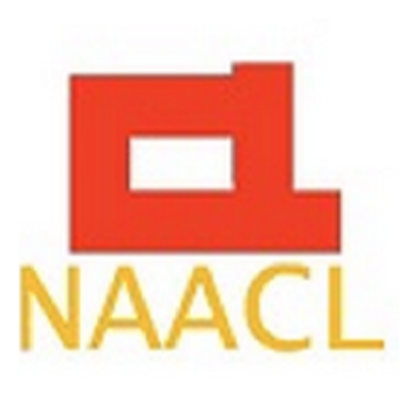naacl 1990 论文列表
Speech and Natural Language: Proceedings of a Workshop Held at Hidden Valley, Pennsylvania, USA, June 24-27, 1990.
|
Opportunities for Advanced Speech Processing in Military Computer-Based Systems.
The Penman Natural Language Project.
Natural Language, Knowledge Representation, and Discourse.
Very Large Annotated Database of American English.
Natural Language Research.
Project Summary: Linguistic Knowledge Sources for Spoken Language Understanding.
Real-Time Speech Recognition Systems.
A Real-Time Spoken-Language System Interactive Problem-Solving.
Speech Representation and Speech Understanding.
Research in Text Processing: Creating Robust and Portable Systems.
PROGRESS REPORT: Active Knowledge Structures in Natural Language Understanding.
Extending The Scope Of Text Understanding Systems Evaluation.
NIST-DARPA Interagency Agreement: SLS Program.
Research and Development for Spoken Language Systems.
Robust Speech Recognition Technology Program Summary.
Portable Software Modules for Speech Recognition.
Large Vocabulary Speech Recognition Prototype.
Interactive Multimedia Explanation for Equipment Maintenance and Repair.
The PLUS Accelerator.
Speech Research at Carnegie Mellon.
A Microphone-Array System for Speech Recognition Input.
Segment-Based Acoustic Models with Multi-level Search Algorithms for Continuous Speech Recognition.
Evaluating the Use of Prosodic Information in Speech Recognition and Understanding.
Spoken Language Systems.
Research In Continuous Speech Recognition.
Adaptive Natural Language Processing.
Recent Results from the ARM Continuous Speech Recognition Project.
An 86, 000-Word Recognizer Based on Phonemic Models.
Spoken Letter Recognition.
Recent Progress on the SUMMIT System.
Session 12: Speech Recognition II.
Machine Translation Again?
Extending the Lexicon by Exploiting Subregularitles.
Generic Text Processing: A Progress Report.
Towards Understanding Text with a Very Large Vocabulary.
Session 11: Natural Language II.
Experiments with Tree-Structured MMI Encoders on the RM Task.
Recognition of Noisy Speech: Using Minimum-Mean Log-Spectral Distance Estimation.
Training Set Issues in SRI's DECIPHER Speech Recognition System.
The Lincoln Continuous Tied-Mixture HMM Speech Recognizer.
Improved Hidden Markov Modeling for Speaker-Independent Continuous Speech Recognition.
IMPROVED ACOUSTIC MODELING FOR CONTINUOUS SPEECH RECOGNITION.
Implementation Aspects Of Large Vocabulary Recognition Based On Intraword And Interword Phonetic Units.
A New Paradigm for Speaker-Independent Training and Speaker Adaptation.
DARPA Resource Management Benchmark Test Results June 1990.
Session 10: Evaluation of Systems on the Resource Management Database.
Representation Quality in Text Classification: An Introduction and Experiment.
Poor Estimates of Context are Worse than None.
Deducing Linguistic Structure from the Statistics of Large Corpora.
Generating a grammar for statistical training.
Statistical Parsing of Messages.
Structural Ambiguity and Lexical Relations.
Using Explanation-Based Learning to Increase Performance in a Large-Scale NL Query System.
Session 9: Automatic Acquisition of Linguistic Structure.
Spoken Language Understanding For Personal Computers.
On Deftly Introducing Procedural Elements into Unification Parsing.
Syntactic and Semantic Knowledge in the DELPHI Unification Grammar.
The design of a spoken language interface.
A Comparison of Speech and Typed Input.
Training and Evaluation of a Spoken Language Understanding System.
Recent Progress on the VOYAGER System.
Session 8: Spoken Language Systems II.
Algorithms for an Optimal A* Search and Linearizing the Search in the Stack Decoder.
Continuous Speech Recognition from a Phonetic Transcription.
On the Interaction Between True Source, Training, and Testing Language Models.
Automatic Phonetic Baseform Determination.
Fast Search Algorithms for Connected Phone Recognition Using the Stochastic Segment Model.
A Rapid Match Algorithm for Continuous Speech Recognition.
Phoneme-in-Context Modeling for Dragon's Continuous Speech Recognizer.
Towards Environment-Independent Spoken Language Systems.
An Algorithm for Determining Talker Location using a Linear Microphone Array and Optimal Hyperbolic Fit.
Session 7: Speech Recognition I.
SRI's Experience with the ATIS Evaluation.
Management and Evaluation of Interactive Dialog in the Air Travel Domain.
Designing the Human Machine Interface in the ATIS Domain.
Preliminary ATIS Development at MIT.
The CMU Air Travel Information Service: Understanding Spontaneous Speech.
BBN ATIS System Progress Report - June 1990.
Session 6: ATIS Site Reports and General Discussion.
DARPA ATIS Test Results June 1990.
Beyond Class A: A Proposal for Automatic Evaluation of Discourse.
Developing an Evaluation Methodology for Spoken Language Systems.
The ATIS Spoken Language Systems Pilot Corpus.
Evaluation of Spoken Language Systems: the ATIS Domain.
Session 5: Overview of the ATIS System.
Hardware for Hidden Markov-Model-Based, Large-Vocabulary Real-Time Speech Recognition.
The Dragon Continuous Speech Recognition System: A Real-Time Implementation.
Toward a Real-Time Spoken Language System Using Commercial Hardware.
Session 4: System Implementation Strategies.
Evaluating Natural Language Generated Database Records.
Session 3: Natural Language Evaluation.
Making Abduction More Efficient.
Performing Integrated Syntactic and Semantic Parsing Using Classification.
Two Recent Developments in Tree Adjoining Grammars: Semantics and Efficient Processing.
Interactive Multimedia Explanation for Equipment Maintenance and Repair.
Picking Reference Events from Tense A Formal, Implement able Theory of English Tense-Aspect Semantics Trees.
Session 2: Natural Language I.
The Use of Relative Duration in Syntactic Disambiguation.
Finite-State Approximations of Grammars.
A Tree.Trellis Based Fast Search for Finding the N Best Sentence Hypotheses in Continuous Speech Recognition.
Efficient, High-Performance Algorithms for N-Best Search.
Session 1: Spoken Language Systems I.
Overview of the Third DARPA Speech and Natural Language Workshop.


